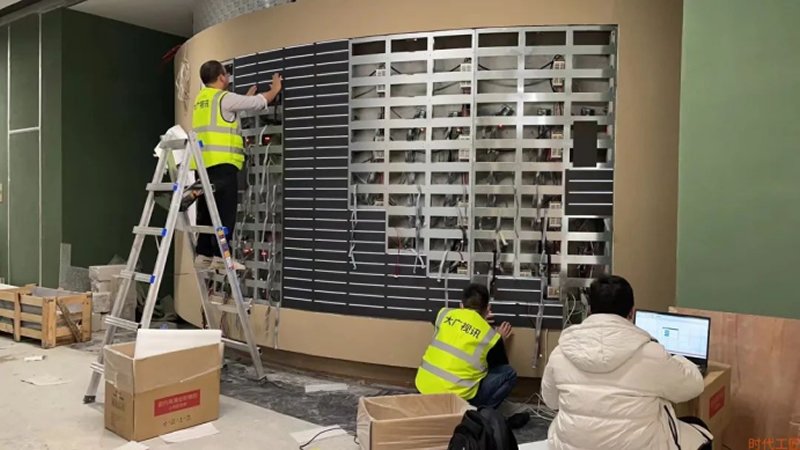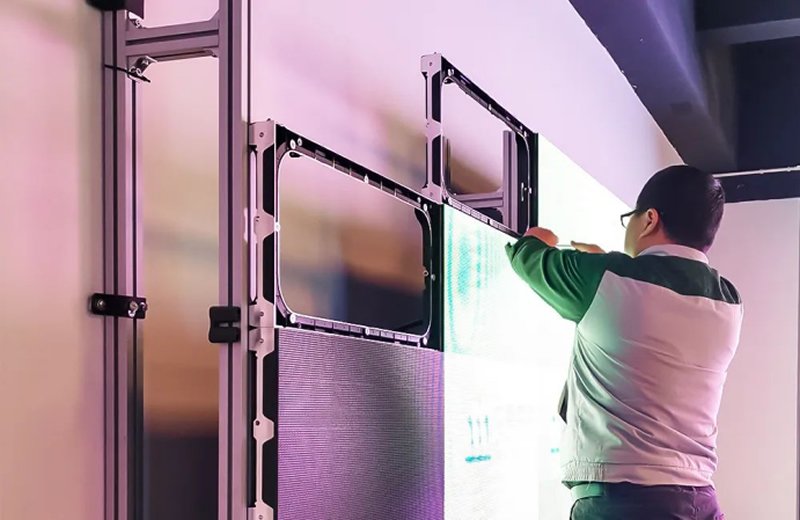Front and rear maintenance are two distinct approaches for repairing and replacing components in LED displays, differing primarily in the direction of access (front/back). Each method suits specific scenarios and carries unique advantages and limitations. Below is a detailed comparison:
1. Definition and Core Differences
Front Maintenance: Operations (e.g., replacing modules, power supplies, driver boards) are performed from the viewing side of the display, without accessing the rear.

Rear Maintenance: Operations require access from the non-viewing side (back), typically via dedicated space behind the screen.

2. Applicable Scenarios
Front Maintenance Preferred For:
Space-constrained installations: Wall-mounted displays (back flush against walls), narrow indoor areas (e.g., elevator lobbies, corridors).
Fine-pitch LED displays: Dense pixels and compact modules leave insufficient rear space; front access simplifies operations.
Rental/temporary displays: Rapid assembly/disassembly needs (e.g., stage rental screens) benefit from quick-release front mechanisms.
Rear Maintenance Preferred For:
Ample rear space setups: Outdoor pole-mounted displays, large stadium screens (with 0.8–1.5m rear maintenance pathways).
Large cabinet-style displays: Bulkier components (modules, power supplies) require direct rear access.
High-frequency maintenance: Outdoor screens (exposed to environmental stress) benefit from safer rear access (avoiding front-surface damage).
3. Pros and Cons Comparison
| Aspect | Front Maintenance | Rear Maintenance |
| Space Requirements | Minimal rear space needed | Requires dedicated rear access space |
| Operation Efficiency | Faster for fine-pitch/rental screens | More straightforward for large components |
| Safety | Risk of damaging front surface during repair | Safer for frequent outdoor maintenance |
| Cost | Higher module complexity (e.g., magnetic locks) | Lower hardware costs, simpler structure |
- Structural Design Differences
Front Maintenance: Modules use magnetic attachments or spring latches for front-side removal. Power supplies/driver boards are mounted front-accessible sliding brackets.
Rear Maintenance: Modules are screw-fixed to the cabinet rear; removal requires unscrewing from behind. Cabinets feature rear access panels or openings for internal component service.5. Selection Guidelines
Choose front maintenance for: Space-limited installations (e.g., walls, narrow corridors). Fine-pitch or rental displays requiring rapid servicing.
Choose rear maintenance for:
Outdoor/large-venue screens with rear space availability. High-maintenance environments (e.g., harsh weather exposure).
